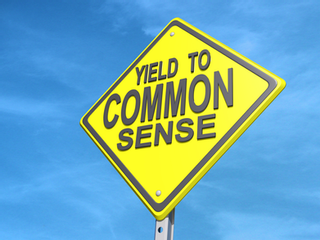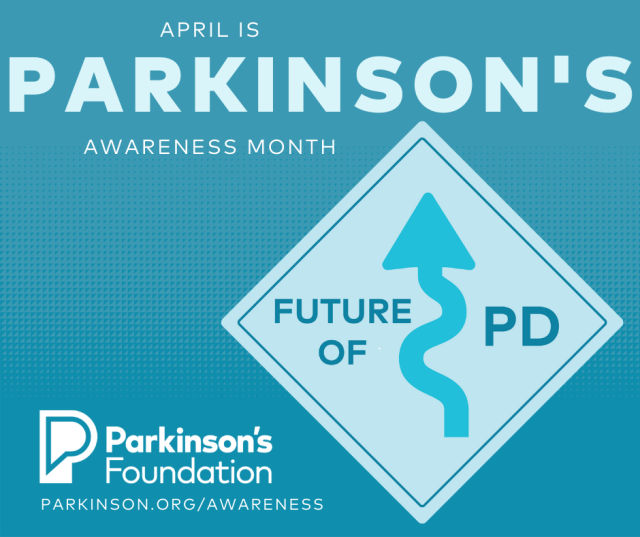 By now everyone reading this knows I like definitions. It wasn’t’ like that originally… I was more like “Definitions?!? Bah Humbug!!” But after working for a number of years with a great coworker we called ‘The Word Man‘ (who was always handy with a definition of a word), I came to appreciate definitions a little bit more.
By now everyone reading this knows I like definitions. It wasn’t’ like that originally… I was more like “Definitions?!? Bah Humbug!!” But after working for a number of years with a great coworker we called ‘The Word Man‘ (who was always handy with a definition of a word), I came to appreciate definitions a little bit more.I know there are many non-Parkinson’s folks out there who may have a quizzical look on their faces while their Parkie friends are talking about a new PD medication or procedure (“STN?? DBS? Dyskinesia?!? What are those, some kind of new root beer brew??“) So I thought for today’s blog entry I would present us all with my condensed “layman’s” Parkie dictionary. In this I hope to give a short definition for a lot of the more common – and also less common – Parkinson’s terms so that when you are talking with your favorite Parkie you’ll have some idea as to what the heck they are talking about! You could even print it and put it up on the bathroom mirror so that you can review it every morning while getting ready for work! (OK, OK, I’ll admit – that’s going a little bit too far!)
Common Parkinson’s Definitions
Parkinson’s – Well of course, ya have to know this one first! Named after British surgeon James Parkinson (1725-1824) who was the first to first describe “paralysis agitans“, that would later be renamed Parkinson’s Disease (or PD). PD is a degenerative disease of the brain that affects the motor system of the body. This is due to the death of dopamine cells in the brain, leading to a loss of the neurotransmitter chemicals that aid movement. Currently there is no cure.
Dopamine – A neurotransmitter chemical in the brain that plays an important role in movement of the muscles of the body. A lack of this chemical is the main cause of Parkinson’s.
Neurotransmitter – A necessary chemical in the brain that is responsible for communicating messages between brain cells (neurons).
Basal Ganglia – A structure deep in brain that is responsible for the ‘trafficking‘ (or coordination) of muscle movement messages between different areas of the brain – including muscle movements, habit learning, cognition and emotion.
Substantia Nigra – Latin for “black substance“, this is a small structure in the basal ganglia that also plays an important role in muscle movement. It is the area that produces dopamine for use by other portions of the brain; it is here that brain cells begin to die off, resulting is lower and lower levels of dopamine. The result is the beginning of Parkinson’s. And here’s an interesting note: It is believed that 60-90% of the dopamine brain cells here die off before one even starts to have the symptoms of PD!
Subthalamic Nucleus (or STN) – A main nerve center near the substantia nigra. This is the area usually targeted when doing Deep Brain Stimulation for a Parkinson’s patient.
Rigidity – Just a fancy word for muscle stiffness. This is one of the main clinical features of Parkinson’s.
Tremor – Involuntary, uncontrolled rhythmic movements of muscles – mainly occurring in Parkinson’s when the muscle is at rest (i.e. resting tremor). In PD, this normally affects the hands, head, or other body parts. This is another main symptom of Parkinson’s.
Alpha-Synuclein – A protein found in brain cells (neurons) that is believed to ‘clump‘ in Parkinson’s and possibly cause neurons (such as those in the substantia nigra) to die. The role of alpha-synuclein and it’s full effect on the brain – good and bad – is not fully understood as of yet .
Sinemet (or Carbidopa-Levodopa) – Also known as L-Dopa. This is the most commonly administered drug given to PD patients. It works by restoring the level of dopamine in a patient’s brain; thus allowing the patient to regain smooth-movement in their muscles, along with other motor and cognitive functions. It was first discovered in the 1950’s by researchers, and even today it is still the primary drug used for Parkinson’s. Once ingested and absorbed into the bloodstream, it enters the brain and gets converted directly into dopamine, which then replenishes the level of that neurotransmitter in the brain. However, this only lasts for a certain amount of time, after which the patient must take another dose. Carbidopa is an add-on which allows more of the L-Dopa to get into the brain – for PD patients, this usually is always given together in one pill/dose. Sinemet is the original brand-name of the combination of Carbidopa and L-Dopa, and is still used by people today to refer to the medication, even if it is generic.
Movement Disorders Specialist – Also know as an MDS. This is a neurologist that has additional training in movement disorders such as Parkinson’s, and thus are more experienced in treating these patients.
Now here are some of the other less-known terms that one should know if you plan on conversing ‘Parkinson-ese‘:
Other Useful Parkinson’s Definitions
Biomarkers – This is a measurable, definable physical trait that can be used to determine and describe a disease and it’s progression. It is one of the “Holy Grail’s” of PD research. As a “layman’s” example, it could be the development of a blood test that one could take to determine if that person has Parkinson’s, is prone to have the disease, or is getting better or worse. Currently, there are no valid biomarkers available for PD.
Blood-brain barrier – The area (of highly packed cells) around the brain that separates the nervous system from the body’s blood stream. It is designed to protect the brain from foreign bodies such as bacteria, viruses, etc. In drug research, however, this is a major limitation, as a drug has to be designed to get past this barrier in order to enter the brain and help the patient.
Bradykinesia – This is just a fancy-wancy way of describing slowness of movement. In PD, it is the slowing down and loss of smooth muscle movement.
Deep Brain Stimulation (DBS) – Boy am I familiar with this one! This is a surgical procedure where thin wires (usually 2) with electrodes on the end are inserted deep into the brain – in PD, this is usually the STN. Those wires are then connected to a neurostimulator/battery placed in the chest, which delivers electrical stimulation to targeted areas in the brain. This (usually) helps control some of the symptoms of PD.
Dopamine agonist – Another Parkinson drug that ‘mimics‘ dopamine and binds to the same brain receptors that dopamine does and produces the same effect. (I call it ‘fake’ dopamine)
Dyskinesia – Involuntary and uncontrollable – even excessive – movements of the body. These are usually jerky type of movements that are different than tremor. A common side effect of taking Levodopa therapy, especially after 5-7 years.
Dystonia – Now this is a term I am very familiar with (and I wish I wasn’t)! It describes abnormal or awkward posture or movements of a limb or other body part. In my case, it meant cramping of muscles – specifically the toes and foot. This is a common symptom of PD, where the toes will cramp down uncontrollably (and usually painfully), the big toe goes up, and the foot will twist inward. DBS can help with this symptom.
Facial mask – A symptom experienced by some PD patients where their face is devoid of emotion; the face is almost immobile and the eyes blink much less than normal.
Freezing – When a PD patient loses – abruptly and temporarily – the ability to move or walk. This usually occurs when walking at a boundary point, such as a door.
Idiopathic – This is another fancy word that simply means there isn’t any known or apparent reason or cause – Idiopathic Parkinson’s means there isn’t any known reason why the person got the disease.
Lewy body – Another toxic protein clump that accumulates in the dead (or dying) dopamine cells in the brain – usually the subthalamic nucleus.
Micrographia – Another fancy term that describes small, cramped handwriting. This is a symptom for many PD patients.
MJF – Why, Michael J. Fox, of course!
Neuroprotective – A substance that helps keep brain neurons alive and protected. At this time, there are no known treatments for PD that are neuroprotective – all treatments currently simply treat the symptoms of the disease. Researchers are continuing to look at various compounds to determine if they are neuroprotective.
On-off effect – I’ve talked about this before, and boy this is another one I am familiar with… It refers to the sudden loss of the benefits of Levodopa, resulting in the return of symptoms. This can last minutes or even hours!
Orthostatic Hypotension – Another fancy term to describe low blood pressure. For PD patients, this is usually caused by getting or standing up too quickly from a laying position.
Shaking Palsy – This is an antiquated term that was used to describe Parkinson’s before it became known as such. i.e., “That person has the Shaking Palsy.“
Wearing-off effect – The loss of the effectiveness of Levodopa between doses. If you lose the effect of Levodopa and it is not yet time for your next dose, it has ‘worn off‘.
Young-onset Parkinson’s disease – A rarer form of PD that occurs to someone under the age of 40. Michael J. Fox had/has young-onset PD, as he began having symptoms at 30 years old.
Well, there you have it – Tom’s Parkie Dictionary! Hopefully this little blog posting will not only educate those of you without PD, but also help you more easily converse with your favorite Parkie! At any rate, you can’t say you didn’t learn something today!!
Till next time!



